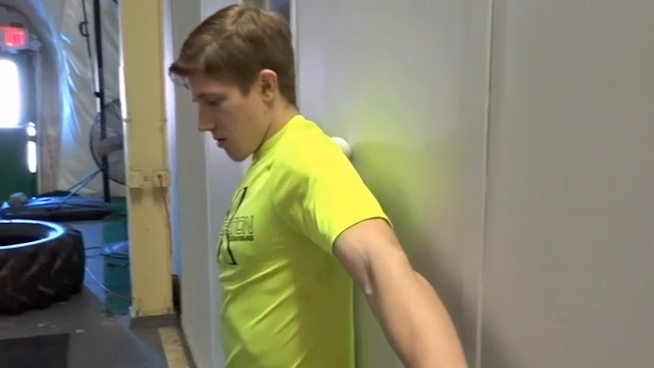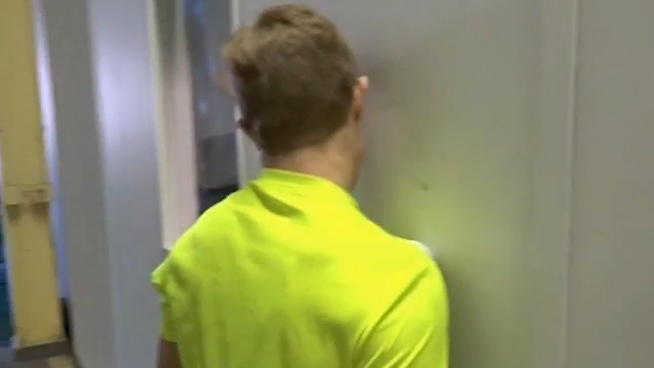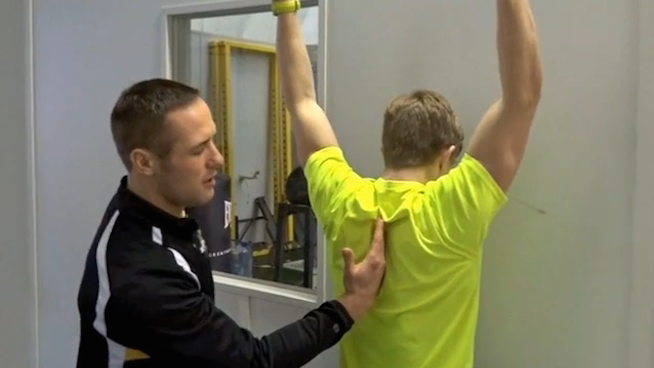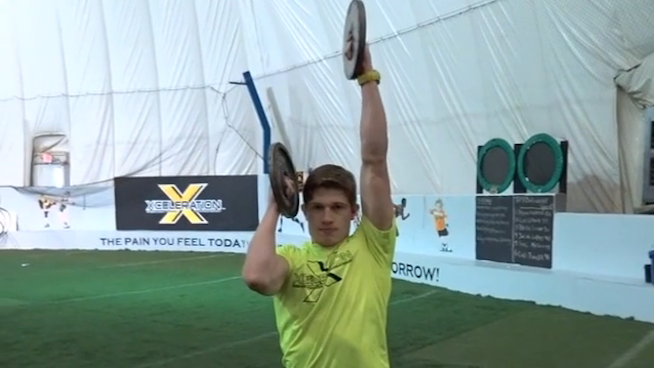How to Improve Shoulder Strength and Flexibility
![]()
Want to know what the weakest joint in the body is?
The shoulder joint.
I can’t tell you how many athletes I have seen who have had to experience shoulder surgery. At one point during my college wrestling career, all three of my roommates had shoulder surgery in the same week.
Why does it happen? I see so many athletes overuse their shoulders as they play game after game or pitch inning after inning. At the same time, they fail to focus on how to improve shoulder strength and flexibility to prevent injury.
High-performance coach Eric Cressey said it best: “Pitching more than 100 innings per year is associated with a 350 percent increase of risk of a serious arm injury in youth athletes. If you can count, you can help prevent injuries.”
To keep your shoulders safe, you have to focus on how to improve shoulder strength and flexibility. Here are four movements to help you get started. Practice these two or three times per week, and you will begin to notice less pain in your shoulders. Check out the video player above for a demonstration of each exercise.
1. Lacrosse Ball Posterior Shoulder Roll

How to do it:
- Lean against a wall or solid surface with a lacrosse ball between your spine and your shoulder blades.
- Put some pressure on the ball. Roll up and down until you find a tender spot
- Gently apply pressure to the tender spot, rolling back and forth for about 3-5 minutes per side.
2. Lacrosse Ball Anterior Shoulder Roll

How to do it:
- Place the ball right in the front part of your shoulder.
- Press against the wall and roll the ball until you hit a tender spot (3-5 minutes per side).
What it does:
- The lacrosse ball creates a myofascial release that helps with soreness and pain around joints.
- It frees up the range of motion in your shoulders and allows you to move with less pain.
3. Wall Raise with a Scap Shrug

How to do it:
- Face a wall with your elbows bent at 90 degrees and palms facing each other.
- Slightly driving into the wall, move your hands up until your arms reach full extension.
- With your arms extended, pull your hands back behind your head (use your scap muscles.)
- Perform 2 sets of 10 reps at least twice a week.
What it works:
- Athletes often have shoulder pain because they rely so much on the front part of the shoulder for moving. By activating the scap muscles (back of the shoulder), you balance the strength in your shoulder joint and reduce the chance of injury.
- You want to have symmetrical shoulders, meaning that the front and back of the shoulder have equal strength and range of motion.
4. Shoulder Matrix Raise

This is a great exercise to do either before you work out or between heavy pressing exercises.
How to do it:
- Grab a pair of 5- or 10-pound plates (the weight should feel fairly light) and perform the following movements:
- Neutral Press Reach
- Shoulder Press
- Arms flexed, cross in front of body reach
- Arms flexed, external rotation
- Shoulder Abduction Bicep Curl
- Arms extended, low cross in front of body
What it works:
- Activates and strengthens the entire shoulder joint
RECOMMENDED FOR YOU
MOST POPULAR
How to Improve Shoulder Strength and Flexibility
![]()
Want to know what the weakest joint in the body is?
The shoulder joint.
I can’t tell you how many athletes I have seen who have had to experience shoulder surgery. At one point during my college wrestling career, all three of my roommates had shoulder surgery in the same week.
Why does it happen? I see so many athletes overuse their shoulders as they play game after game or pitch inning after inning. At the same time, they fail to focus on how to improve shoulder strength and flexibility to prevent injury.
High-performance coach Eric Cressey said it best: “Pitching more than 100 innings per year is associated with a 350 percent increase of risk of a serious arm injury in youth athletes. If you can count, you can help prevent injuries.”
To keep your shoulders safe, you have to focus on how to improve shoulder strength and flexibility. Here are four movements to help you get started. Practice these two or three times per week, and you will begin to notice less pain in your shoulders. Check out the video player above for a demonstration of each exercise.
1. Lacrosse Ball Posterior Shoulder Roll

How to do it:
- Lean against a wall or solid surface with a lacrosse ball between your spine and your shoulder blades.
- Put some pressure on the ball. Roll up and down until you find a tender spot
- Gently apply pressure to the tender spot, rolling back and forth for about 3-5 minutes per side.
2. Lacrosse Ball Anterior Shoulder Roll

How to do it:
- Place the ball right in the front part of your shoulder.
- Press against the wall and roll the ball until you hit a tender spot (3-5 minutes per side).
What it does:
- The lacrosse ball creates a myofascial release that helps with soreness and pain around joints.
- It frees up the range of motion in your shoulders and allows you to move with less pain.
3. Wall Raise with a Scap Shrug

How to do it:
- Face a wall with your elbows bent at 90 degrees and palms facing each other.
- Slightly driving into the wall, move your hands up until your arms reach full extension.
- With your arms extended, pull your hands back behind your head (use your scap muscles.)
- Perform 2 sets of 10 reps at least twice a week.
What it works:
- Athletes often have shoulder pain because they rely so much on the front part of the shoulder for moving. By activating the scap muscles (back of the shoulder), you balance the strength in your shoulder joint and reduce the chance of injury.
- You want to have symmetrical shoulders, meaning that the front and back of the shoulder have equal strength and range of motion.
4. Shoulder Matrix Raise

This is a great exercise to do either before you work out or between heavy pressing exercises.
How to do it:
- Grab a pair of 5- or 10-pound plates (the weight should feel fairly light) and perform the following movements:
- Neutral Press Reach
- Shoulder Press
- Arms flexed, cross in front of body reach
- Arms flexed, external rotation
- Shoulder Abduction Bicep Curl
- Arms extended, low cross in front of body
What it works:
- Activates and strengthens the entire shoulder joint










